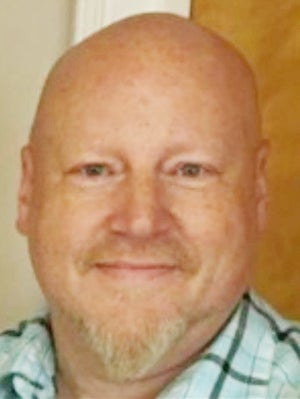Our View: Where’s the accountability?
Published 10:25 am Tuesday, January 28, 2020
If you’re reading this sentence, you’ve already invested more effort into your understanding of the world around you than most other people. By reading beyond the headline, you’ve made a conscious choice to better yourself through reading, to not take your assumptions for granted, to consider alternative viewpoints — to be thoughtful with how you live your life.
In today’s world of aggressive thoughtlessness, people like us — the ones who read beyond the headlines — are a dying breed.
Facts and comprehension just don’t seem to do it for many people anymore. More and more of us are living in a world defined by memes, hashtags and whatever happens to be trending in the moment. We are increasingly choosing easy, thoughtless lives over the hard — and ultimately more satisfying — work of asking questions, finding answers and thinking critically.
Since you’re still here, thinking with us, let’s think about something else that’s disappearing: accountability in reporting.
When a newspaper like this one prints something, it is held accountable for what it prints. If we print something that’s wrong, it affects our reputation with readers. We issue corrections and clarifications whenever appropriate to fix the things we get wrong, as a way of maintaining our reputation as a trustworthy source of news.
No journalist here or anywhere else is perfect, and we never pretend that we are. Instead, we promise to own up to our mistakes — we promise to be accountable for what we publish.
There is an absolute lack of such accountability in the social media world. Anyone can create an account or persona that looks like anyone else, and share outright lies as facts. They never have to correct the record, and they never face consequences for their actions. In fact, if they lie well enough and use the right graphics and buzzwords, they can get thousands, perhaps millions of other people to spread the lie for them without any real ability to trace the lie back to the source.
This is what social media is increasingly becoming: a conduit that allows anonymous lies to spread with impunity.
When a newspaper prints a story, there’s often a reporter behind that story who worked many hours to write it carefully so it only contained facts. And there’s an editor or two who read the story to check the reporter’s work. When an error does slip through, it’s a sickening feeling for everyone involved.
When a meme or post spreads on social media, those spreading it barely give it a thought. They may spend two or three seconds reading a simple one- or two-sentence post before clicking “like” or “share” and then moving on. No one has to know where the post came from, who made it or what the motives were. And if it turns out to be misleading or totally false, very few ever notice. Even fewer care.
If you printed a newspaper using the same standards of accountability that websites like Facebook and Twitter hold their users to, you wouldn’t just go out of business overnight, you’d probably be sued three times before you could close your doors.
This double standard reveals a couple of insights:
First, it’s the thoughtlessness of the majority of social media users that makes social media so toxic. If people ignored the “s***posts,” read beyond the headlines and demanded the same accountability from social media websites they expect from other publishers such as newspapers, there wouldn’t be a problem.
But that seems next to impossible, because social media is designed to breed thoughtlessness. Facebook and Twitter don’t want you to think about accountability for what you see on their sites — accountability would just eat into profits. They just want you to scroll and like and share and comment and scroll some more. And they have been wildly successful in accomplishing that goal.
Second, people have not completely forgotten how to hold organizations responsible for what they do. Readers still hold newspapers and other reputable media organizations accountable every day, and many of those media organizations continue to survive by maintaining integrity and trustworthiness.
Humanity seems to have developed a blind spot when it comes to social media. Too many people log on to Facebook and turn their brains off. The same people who hold newspapers to exacting standards of accuracy and impartiality don’t for a second consider the reputability or trustworthiness of the stuff they read in their “news feed.”
We can tackle this problem of thoughtlessness by improving media literacy. Many people can probably already tell the difference between a reputable news source and a questionable one — if you ask them specifically to differentiate the two.
But many don’t understand how important that skill is to navigating the online world on a daily basis. They don’t realize the degree to which questionable sources have infiltrated the online world, and they aren’t at all in the habit of asking “should I trust this?” when they’re spending time on social media sites.
Since this week is National News Literacy Week, as defined by Scripps and the News Literacy Project, it’s a great time to start using more critical thinking when consuming news. You can learn more about National News Literacy Week and find a new lesson plan on media literacy each day this week at newslit.org/news-literacy-week.
Editorials represent the opinion of the newspaper’s editorial board. The board comprises publisher Michael Caldwell and Bluegrass Newsmedia editors Whitney Leggett and Ben Kleppinger. To inquire about a meeting with the board, contact Caldwell at 759-0095.




